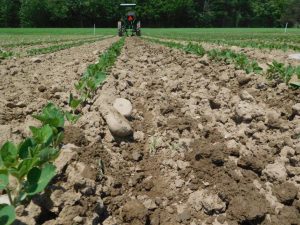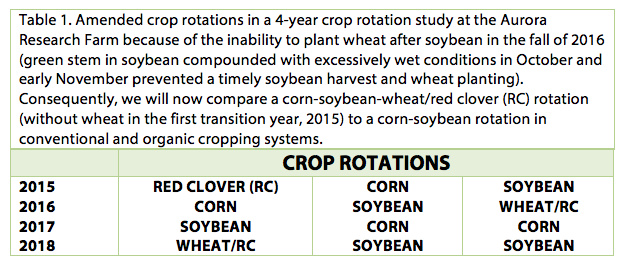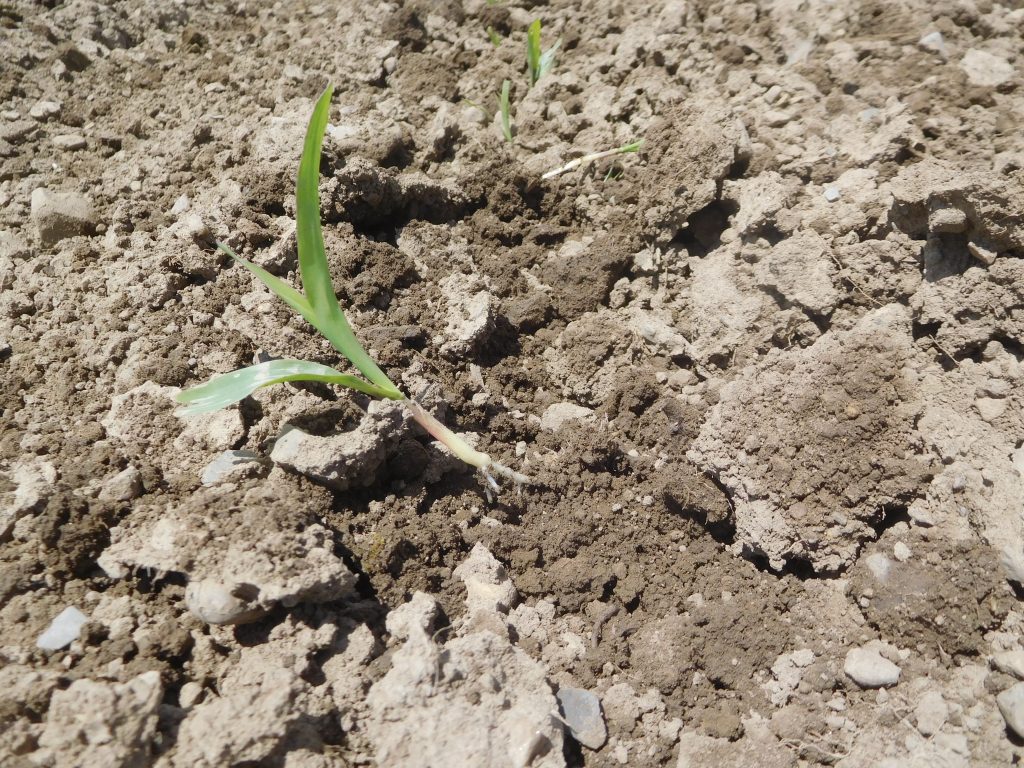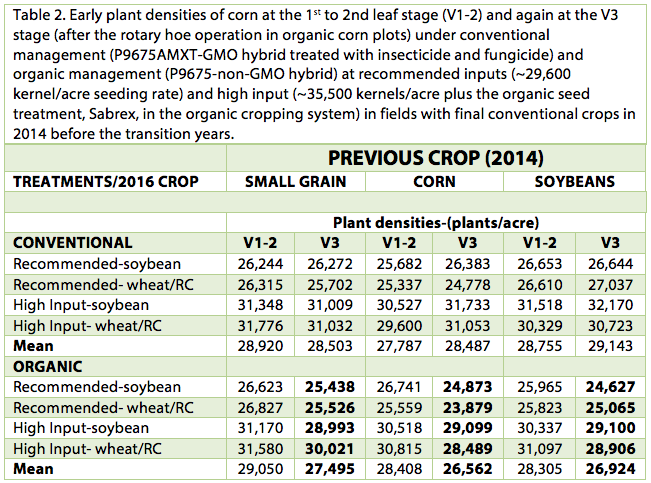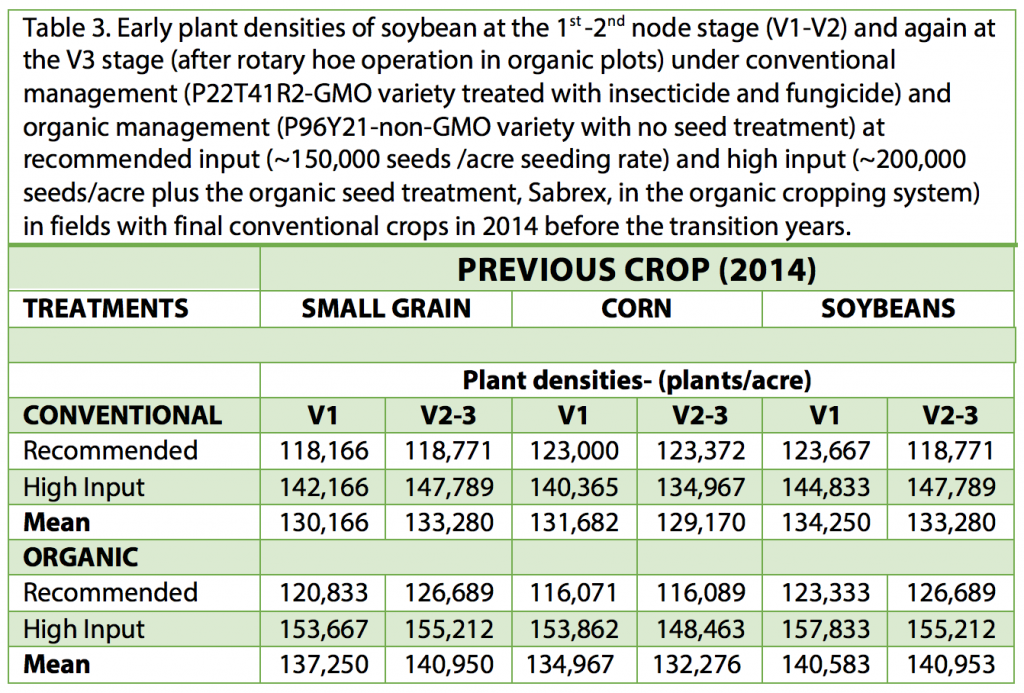Lisa Fields, Cornell Nutrient Management Spear Program Contract Writer
The deadline has been looming for years: all states that are part of the Chesapeake Bay Watershed must reduce nitrogen (N) and phosphorus (P) loads from agricultural sources by 2025. The Environmental Protection Agency (EPA) has set a Total Maximum Daily Load (TMDL) for N and P for each state to achieve water quality goals for the Chesapeake Bay region. The headwaters of the Chesapeake Bay Watershed originate in New York’s Upper Susquehanna Watershed (USW) and include part or all of 17 New York counties (Figure 1).

In 2009, the annual nutrient load delivered to the Chesapeake Bay from USW agriculture was estimated to be 4.54 million pounds of N and 0.53 million pounds of P. The EPA set the 2017 target nutrient load for the USW at 3.79 million pounds of N and 0.45 million pounds of P, with target annual 2025 TMDLs at 3.04 million pounds of N and 0.36 million pounds of P. The 2025 target represents N and P reductions of roughly 33% from the 2009 estimation of these nutrient inputs from USW farms.
Although it is too soon to know if the 2017 total nutrient load targets from USW farms will be achieved, a recent study published in the Journal of Soil and Water Conservation (‘Upper Susquehanna watershed and New York State improvements in nitrogen and phosphorus mass balances of dairy farms.’[1]) suggests that, collectively, farms have already significantly reduced N and P use over the past ten years without sacrificing productivity. The reported downward trend in N and P imports onto dairy farms means a reduced risk of N and P losses to the environment, as well as greatly improved nutrient efficiency.
The study reports the analyses of whole-farm nutrient mass balances (NMBs) completed by 189 New York dairy farms, including 91 located in the USW. The NMBs were completed through the collaborative effort of farmers, private sector certified crop advisors and nutrient management planners, Soil and Water Conservation District staff, and the Upper Susquehanna Coalition (a network of the 17 Soil and Water Conservation Districts in New York and 3 in Pennsylvania). Cornell Cooperative Extension staff, and Cornell faculty and staff were also highly involved.
 The trend study shows that, in 2004, the USW farms averaged an N balance of 77 lbs/acre and a P balance of 9 lbs/acre. In 2013, that average decreased to 46 lbs N/acre and 5 lbs P/acre. These reductions represent a significant effort of successful nutrient conservation by the farms in the study. In addition, assuming all USW dairies can achieve similar reductions, an extrapolation of these findings shows nutrient imports onto farms could be reduced to 9.5 million lbs of N and 0.9 million lbs of P when comparing 2013 versus 2004 (Table 1). This indicates that USW farms may be able to achieve the 2025 TMDL goals.
The trend study shows that, in 2004, the USW farms averaged an N balance of 77 lbs/acre and a P balance of 9 lbs/acre. In 2013, that average decreased to 46 lbs N/acre and 5 lbs P/acre. These reductions represent a significant effort of successful nutrient conservation by the farms in the study. In addition, assuming all USW dairies can achieve similar reductions, an extrapolation of these findings shows nutrient imports onto farms could be reduced to 9.5 million lbs of N and 0.9 million lbs of P when comparing 2013 versus 2004 (Table 1). This indicates that USW farms may be able to achieve the 2025 TMDL goals.
The whole-farm NMB diagnostic tool was developed over 30 years ago to quantify the nutrient status of New York dairy and livestock farms.[1] Over the past 15 years, it evolved under the direction of the Cornell Nutrient Management Spear Program, led by Professor Quirine Ketterings. The NMB reports that farmers receive after they submit their data include the N, P, and K balances (imports minus exports) in pounds per tillable acre and pounds per 100 pounds of milk produced. Typically, the imports are dominated by concentrate feed purchases, with fertilizer nutrients playing a secondary role. The nutrients in milk are the largest source of exports, with exports in the form of animal and crop sales playing a smaller and more variable role among individual farms.
The 189 farms that comprised the NMB dataset represented the wide range of farm sizes and management practices found across New York. Herd size ranged from 20 to well over 1,000 animals, with 71% at less than 200 cows and 29% CAFO sized herds (more than 300 animal units; one animal unit is 1,000 lbs). Milk production across all farms and the 10 years of NMB data ranged from just under 8,000 to over 30,000 pounds per cow per year. Ten percent of all New York dairy farms are CAFO sized, so the non- USW farms in the NMB dataset had a higher percentage of CAFO farms than dairy farms overall in New York. The NMBs from the USW farms closely represented average New York farm size and milk production, with 88% animal feeding operations (AFO) and 12% CAFO, and an average milk production of just over 18,500 pounds per cow per year.

The NMB data from the 189 farms reveal that feed efficiency was the largest factor in the nutrient reductions achieved by New York farms over the ten years of the study. This was accomplished by the fine-tuning that occurred from adopting precision feed management practices that led to higher forage diets. Feeding higher levels of homegrown forage reduced both the quantity and nutrient concentration of purchased concentrate feeds. Decreased imports of fertilizer nutrients also played a role on farms where manure management efficiency was improved and some farms increased nutrient exports in the form of forage sales over the study period as well. Although improved efficiencies reflected by lower NMB numbers are no guarantees of a better economic bottom line, they can contribute to improved financial sustainability. Farm participation in the annual NMB program has been, and remains, voluntary, so trends shown are a testimony to farmers’ opinion that the time involved is a sound investment.
In recent years, the authors of the Journal of Soil and Water Conservation article defined guidelines for interpretation of NMBs by combining balances per tillable acre and per 100 pounds of milk produced. Those farms that meet the “feasible balances” for both the balance per acre and the balance per 100 pounds of milk, are operating in the “optimal operational zone,” termed “the green box” (Figure 2 shows the green box for N, P, and K).
Numbers falling below the green box are not desirable over the long term, as they imply that soil nutrients are not being replenished (mining of soil resources over time). Numbers above the green box can indicate lower efficiency and the opportunity for improved economic returns. The feasible NMBs (within the green box) have been identified as 0-105 lbs N, 0-12 lbs of P and 0-37 lbs of K per tillable acre, and 0-0.88 lbs N, 0-0.11 lbs P and 0-0.30 lbs K per 100 pounds of milk shipped. Due to the variable conditions that occur on farms from year to year, these numbers have been termed as “feasible” rather than absolute goals. However, the feasible NMB numbers can be viewed as benchmarks, as they represent nutrient balances proven to be achievable by most farms.
Having a robust dataset of farm NMBs has clearly been critical for validating the positive change in nutrient efficiency and progress toward meeting watershed TMDL goals. Capturing nutrient conservation accomplishments can answer regulatory demands, but it is also highly useful to the farms that use their annual NMBs to determine their individual farm goals. Farmers have consistently reported the following benefits from completing annual whole-farm NMBs:
- The NMB captures the overall results of management practices, and reflects the degree of nutrient efficiency in the balance numbers and milk exports.
- Trends are illustrated, so the impacts of management changes, such as reduced feed protein levels, are reflected in a reduced N balance.
- A feedback loop is created between NMB report results and management decisions: the tracking process required to complete a NMB causes feed and forage production changes to be considered in light of their potential impacts on the farm’s nutrient efficiency, which is then captured in the NMB report. This adaptive management process has been highly effective in implementing positive change.
- The impacts of manure and fertilizer management practices on soil levels of P and K are reflected in homegrown forages and quantified in the NMB diagnostics. This information is useful to both crop and feed management.
- The NMB results, and their position compared to the green box, give farmers an indication on their progress towards nutrient efficiency goals, and validate results of management decisions.
The authors of the NMB trend study reported a need for a larger dataset that will better represent the nutrient balance status of New York farms. The current dataset shows that nutrient efficiency can improve over time, and illustrates the impressive progress already made by farmers. However, a larger number of farms would provide a more robust dataset to compare the nutrient conservation progress of farms to the nutrient reductions expected by regulatory entities.

